Behind the scenes: Safeguarding “one person, one vote” for Guinea’s millions of registered voters
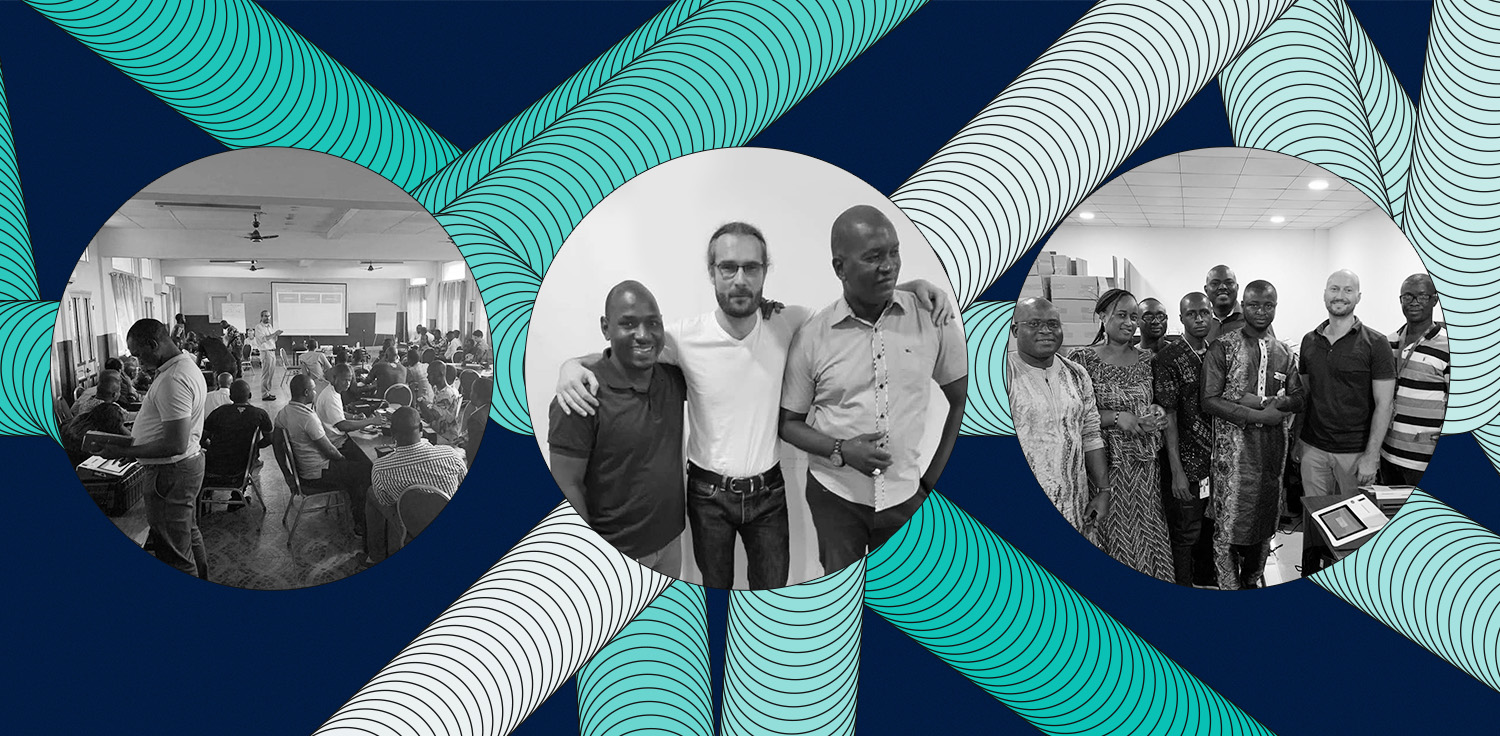
Contributors

Juraj Štubner
Project manager at Innovatrics

Jean-Claude Le Gay
Former public administration consultant
In Guinea, biometric technology has helped to create a reliable voters list – an essential prerequisite for legitimate elections.
For the first time in history, the voters list in Guinea was accepted across the national political spectrum and internationally. The list is the brainchild of the Innovatrics team and Juraj Štubner, a project manager who spent several months in Guinea preparing for the presidential and parliamentary elections. Juraj talked to us about his experiences and gave an insightful look into the realities of realising such a project in this turbulent country, which sits on the Atlantic coast of West Africa.
What’s inside this interview
1. how much hardware had to be used for the data collection
2. why were motorcycles favoured during the fieldwork operations
3. why was most of the data collection done offline
4. what method was used to identify children on the voters list
5. why might some voters have had to climb ladders to vote
How do biometric elections reinforce democracy in developing countries like Guinea?
Voter enrolment and identity checks are complicated in Guinea, largely because there is no reliable civil registry, so citizens have no way of proving their identity with trustworthy documents. As a result, people often registered to vote repeatedly, sometimes just because they did not like their photo or wanted to register elsewhere.
Therefore, to run legitimate elections Guinea needed a reliable voters list. A good list is a guarantee that every eligible voter is allowed to vote, while simultaneously ensuring that everyone has only one vote. Biometric solutions have proven most effective here because they allow people to register through their unique physical information – fingerprints and a photograph of their face.
4 Steps to Voter Registration
1. Pre-Enrolment
The assessment of the hardware and software requirements.
2. Registration
The collection of citizens’ biometric data by trained officials.
3. Data Consolidation
Deduplication: ensuring that no individual has enroled in multiple districts.
4. Voter List Printing
The database is split into districts and the voter IDs are distributed in time for elections.
Read more about the solution here.
Innovatrics helped create the voters list for the elections in Guinea. How did it work?
We supplied the software and some of the hardware to process the records. In the first stage, we migrated old data from previous elections into the new database and developed software to register voters on the spot. The software was installed on 4,000 portable devices that were used across Guinea.
In the next stage, we entered the data that was coming from these registration stations into a central system, and deduplicated it by matching the fingerprints from each record with fingerprints in all the old records. If the algorithm found a “probable” match, the record was flagged and forwarded for review. The Electoral Commission was involved during the whole process, deciding on who would receive a voter’s card based on the deduplication of records.
We managed to complete the entire registration in a very short time – less than four months, with 5.5 million people registered.
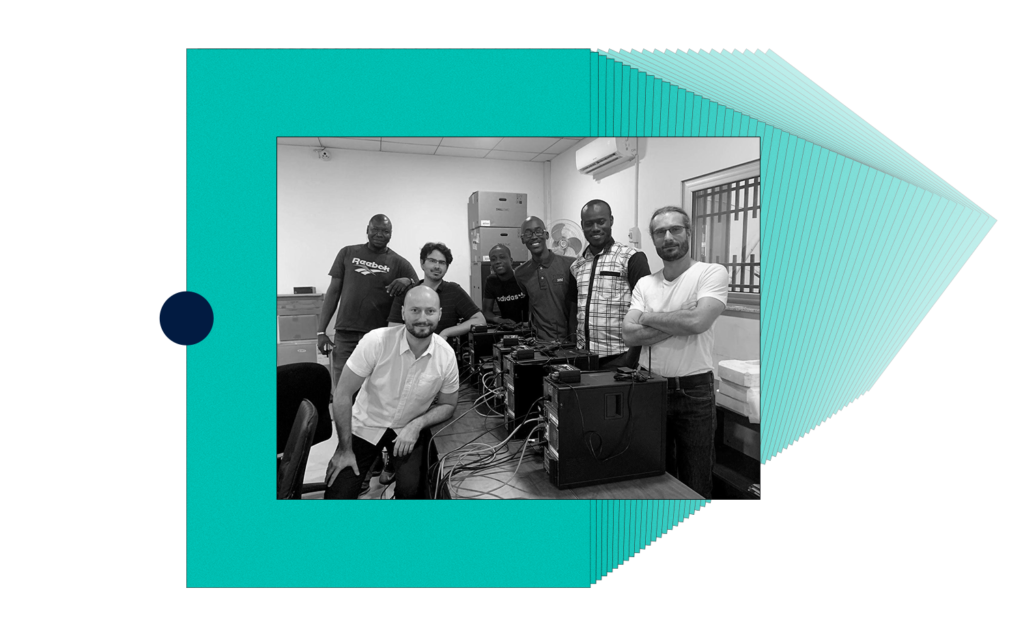
Juraj, you worked directly in Guinea. What was your role and how did you cooperate with the team in Slovakia?
As project coordinator, I was in charge of implementing the system and ensuring good communication with the client and everybody involved. Our team in Slovakia developed the software and designed the hardware that was later installed in Guinea. The advantage of such a collaboration is that a remote team in Bratislava can continuously work on a project without having to travel to Africa. As Innovatrics always provides a rotating team of people on standby, I could call at any time and my colleagues would help me remotely, via a protected online VPN access. This was the only access point – other than that, the system was cut off from the rest of the world.
How did you transport the data server to Conakry, Guinea’s capital city?
Moving the server to Conakry was not a problem because it was delivered by air. The real challenge was getting it to the first floor of the headquarters building – we had to lift the equipment with a crane and bring it into the room through a window. I was a bit worried when I saw those 15 or so guys trying to get the crate in. It was an expensive piece of equipment, and if something had happened, we probably wouldn’t have made the deadline. But they all did their best and, somewhat miraculously, it made it through without any accidents.
Were you directly involved in the fieldwork?
All the logistics around voter registration were handled by a local agency plus eight regional administrators that we hired locally and trained. They provided support and collected data in the different regions. At this level, we created a manual for software use and trained 600 supervisors who were responsible for 4,000 registration station operators. We also provided telephone and face-to-face support throughout the month of the registration period.
Supervisors were provided with service motorcycles, which they were allowed to keep afterwards. It motivated them to take good care of the motorbikes, as they could turn them into mototaxis after the data collection was completed, and use them as a source of income. In Guinea, a mototaxi is a very popular means of transport because it can bypass frequent traffic jams.
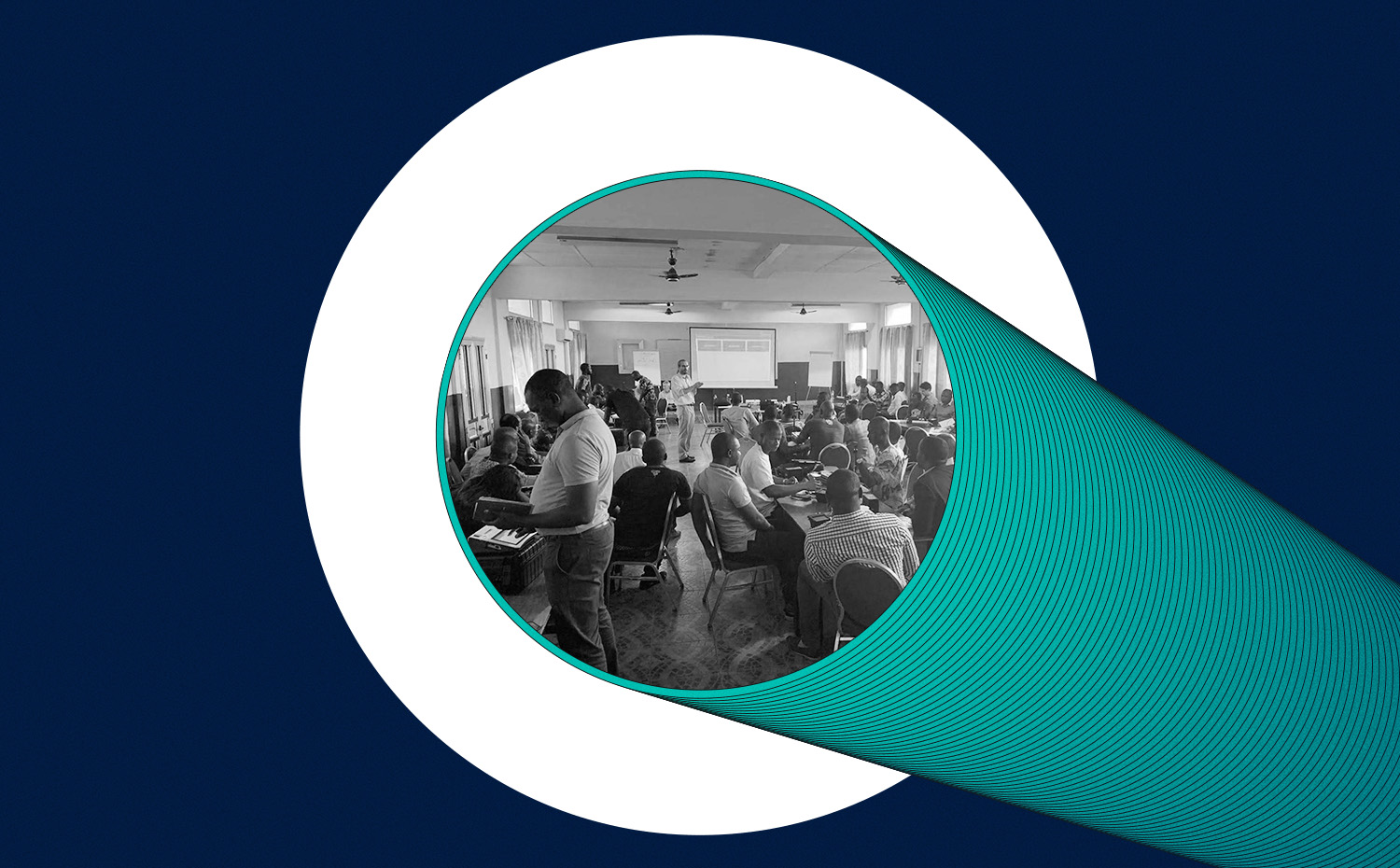
How was the data collection for the biometric registration performed?
Our software was used in over 4,000 mobile registration stations across the country, which were equipped with Android terminals and fingerprint scanners. They ran on a battery that lasted all day. The trained operators responsible for the stations visited villages on designated days, inviting anyone wanting to re-register, or who had never registered before, to come and have their fingerprint scans, photograph, and personal information taken.
How did you then get the data from the field to the headquarters in Conakry? It must have been logistically challenging.
Most of the process was done offline – both because of internet coverage issues and security. Supervisors met with operators every week to download data from all the stations onto USB sticks. Each supervisor then handed the data to our administrators in the regional capitals, who in turn uploaded the data to the regional stations.
We initially tried to send the data from the regional stations to the headquarters in Conakry via the internet, but we couldn’t do it fast enough. Ironically, lack of electricity was a bigger problem than a poor internet connection. In many places in Guinea, there is no electricity grid at all, so if you have a server connected to a generator, you need to hire someone who will constantly refill it with diesel. It was quicker to transport the data by car, so we transported the hard drives in cars with police protection.
How was the voters’ personal data protected from misuse?
The data was encrypted asymmetrically – meaning a different key is used to encrypt it than to read it. So even if someone got hold of the code that encrypted the data, they couldn’t decrypt it. Physically, the data was stored in the Electoral Commission centre in the capital with round-the-clock protection.
How long did the whole process take and how many people came to register?
From the start of the voter registration through to the election, including two audits, it all took less than four months. As I mentioned, 5.5 million people came to register in a month – nobody expected that. The Electoral Commission originally estimated around 1.2 million registrations because by law, those who had already registered for the previous election did not have to register again. However, we had sufficient capacities and our servers were powerful enough.
“From the voter registration to the election, it all took less than four months. More than 5.5 million people came to register in a month. ”
Make no compromise in excluding the ineligible voters
The main aim of using biometric data is to ensure that only people who are eligible to vote get the chance to do so. To get the most precise voters list, make sure to:
– deduplicate your data
– remove the deceased from the voters list
– scan the list for underage citizens
– remove convicts or foreigners
Find more information in the e-book 8 Rules for a Successful Biometric Voter Registration.
What happened to duplicates?
The vast majority of “duplicates” were re-registrations and the individual voter’s record was just updated; it wasn’t a fraud. The important thing was to check these cases and ensure that each person has only one legitimate record, and therefore only one voter card.
In the next stage, duplicates were adjudicated – the Electoral Commission decided, after a detailed review, which records were valid for issuing a voter card. Other records were either merged with the pre-existing records of the same person or marked as suspicious and referred to other competent authorities. The final output was a voters list that included all citizens who were eligible to vote.
Finally, the authorities supplied the Electoral Commission with 25 boxes of death certificates, and the Commission hired 50 people to exclude some 160,000 deceased individuals from the list.
Did you come across any cases in which people were registered as deceased, but were in fact still alive?
We did. An operator showed me a death certificate from 2012 of a girl who came to register two weeks ago. That was the first case, later there were more.
“There was a girl who had been married off at the age of 12 and had run away from her husband when she was 18. She was on a boat that crashed – several people drowned, but she survived. Everyone assumed she was dead, and she took advantage of the situation to start a new life. She then later came to register to vote.”
The election commissioner who worked with us on the allocation of voters to constituencies even said: “I have one such girl at home right now.” This was a girl who had been married off by her parents at the age of 12 and had run away from her husband when she was 18. She was on a boat that crashed, and several people drowned. The girl was rescued and she took advantage of the situation to escape. As the ship had sunk, everyone assumed she was dead. Such people start a new life and then come to register to vote.
However, in other cases, we published provisional voter lists and received complaints that some of the voters had been dead for a long time.
Were there any other unexpected situations or requirements?
There was evidence that children were being enroled in order to get more votes, and the Electoral Commission asked us to detect such cases. We deployed an artificial intelligence solution – our own algorithm that estimates age from a photo. It allowed us to identify and flag suspicious entries based on photos of children’s faces. Coincidentally, we’d had this technology in development for eight years as we anticipated that one day such a request might come – and it did. We submitted the flagged suspicious records to the Electoral Commission, who reviewed them to determine if they were indeed underage.
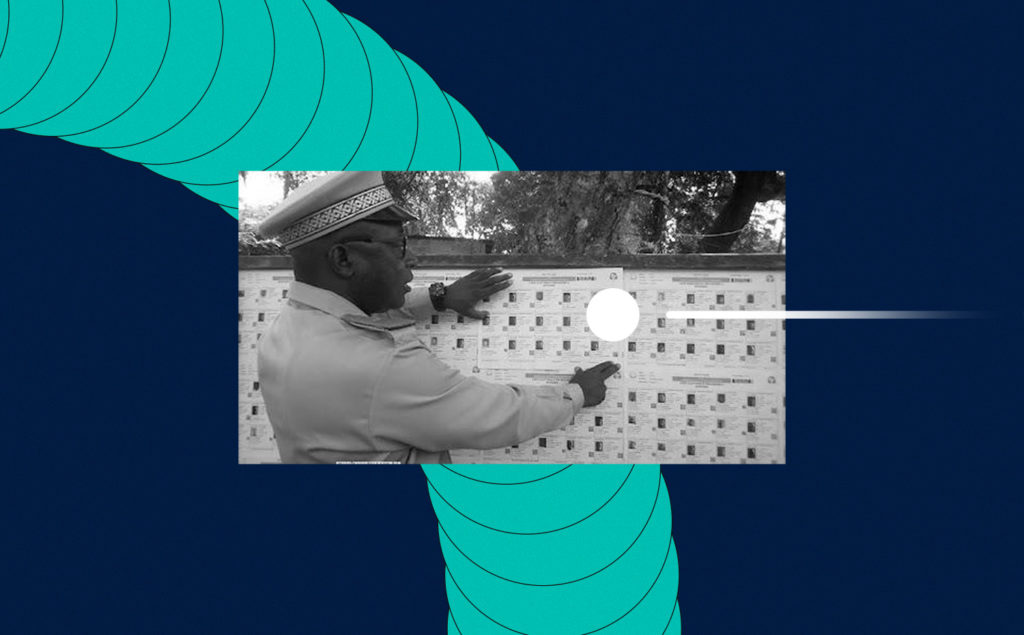
How many children were you able to identify in this way?
Over 58,000. This proved that children were enroled at some stations. Each of the identified records then passed through an operator’s assessment, which confirmed the removal of the child from the list. A local operator, for example, who knows African children better than we do, looked at every single photo of potential minors and decided whether it was a child. Again, the lists of children were publicly available, so people could defend themselves and prove they were adults.
In the end, it turned out that our algorithm had a 96% match with the operators’ assessments. It was something we did for the first time and it was a great success.
“There was evidence that children were being enroled to get more votes, so we deployed an artificial intelligence solution that estimates age from a photo, allowing us to identify suspicious entries based on photos of children’s faces. We identified almost 60,000 children in the list.”
How did you go about allocating people to constituencies?
We had a fantastic commissioner helping us to assign the voters to constituencies. She had travelled all over Guinea to create an electoral map and knew the country perfectly. I suggested to her: “Look, we have 50 voters here and we can assign them to this constituency based on their location.” But she protested: “No, we can’t put them there, there’s a high mountain, they’d have to climb a ladder. We’ll create a separate constituency for them.” She remembered dozens of such locations throughout Guinea.
We also had to take ethnic specificities into account and, for example, include entire villages in a constituency so that they would avoid conflict with another ethnic group. Without the detailed local know-how, this would not have been possible.
Did the Guinean Electoral Commission have any specific requirements?
Their main concern was competence transfer, which means they wanted to be able to operate their system independently after the handover. The system, including the data, had to belong exclusively to Guinea. We committed to installing the system and teaching them how to use it, but after the elections both the system and the data would remain in the hands of the Guinean people. We have no access to it, but if they need our help and contact us, we will help them with support.
How would you assess the cooperation with the Electoral Commission?
I had a very good feeling about our cooperation – we worked with representatives of both the opposition and the coalition. They were genuinely concerned about having a good voters list, the elections being transparent, and the result of the election being accepted by all parties and internationally. The opposition was very active, so the whole process was under extreme scrutiny. That was fine with us because we wanted to be as transparent as possible.
“The representatives from the opposition were very active, so the whole process was under extreme scrutiny. That was fine with us because we wanted to be as transparent as possible.”
So, also thanks to biometric technology, Guinea is closer to democracy…
A good voters list is a necessary prerequisite for legitimate elections, but it does not guarantee that the elections will be democratic. However, if the country can eliminate certain processes that negatively affect elections, biometrics can help increase confidence in democracy in Guinea, and the country can ask for international support. We believe that the biometric register was carried out to the best of our ability, and it has certainly contributed to greater transparency in Guinea.
What international organisations approved the final lists?
Two international audits of the voters list were carried out before the elections – the Organisation Internationale de la Francophonie (OIF) and the Economic Community of West African States (ECOWAS) both performed an audit. We passed both audits without any problems and the list was approved internationally. It was also officially announced on television, where we were present together with members of the Electoral Commission.
What was the most interesting for you about working in Guinea?
There was a lot of personal commitment and creativity required, and there were also tense and time-consuming situations. And that’s how interesting and powerful stories are born. In the end, almost the whole company was involved in some way in the Guinea project, which is something we are still happy about. We’re glad we were able to be part of their story.
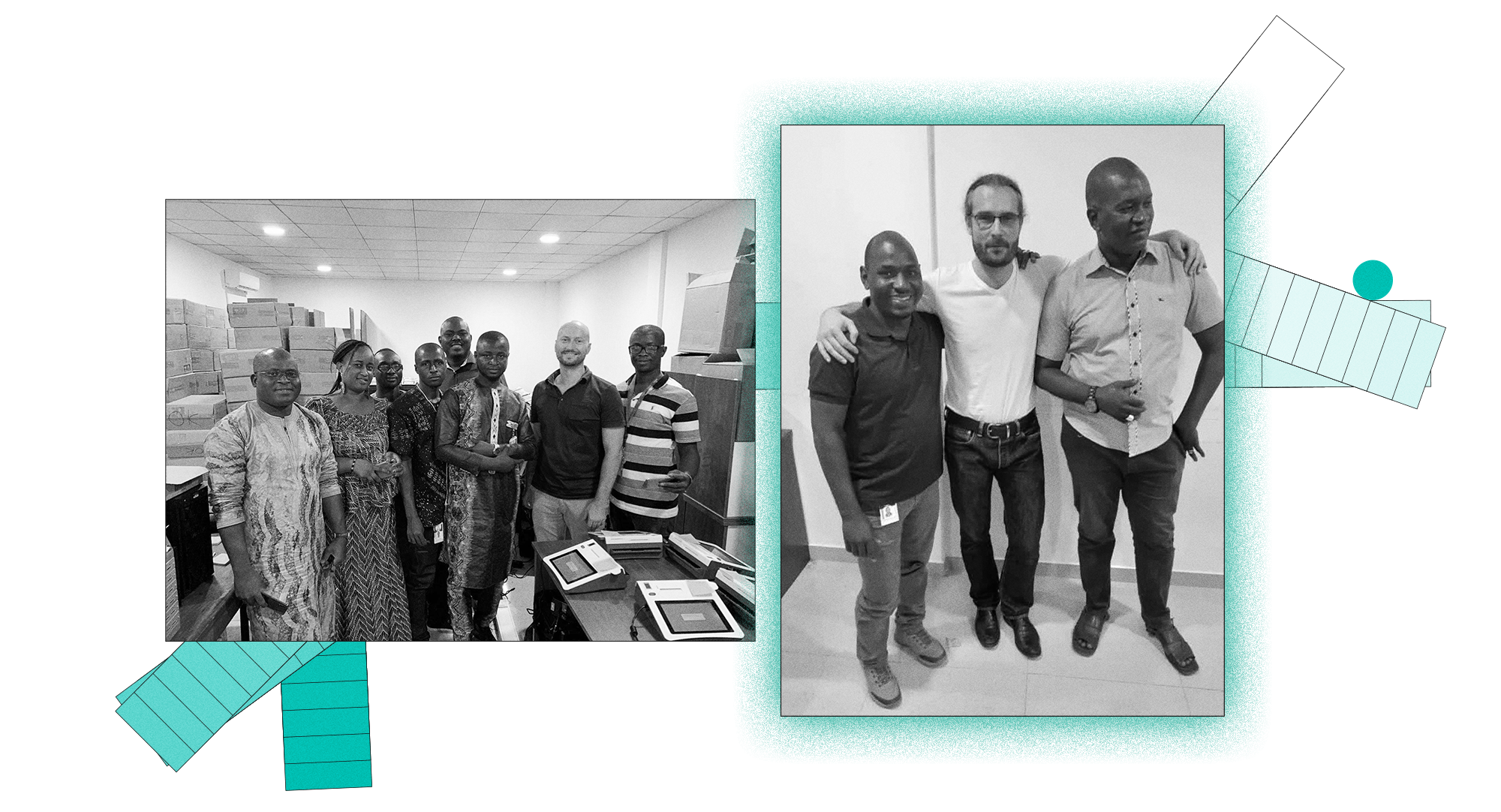
Juraj Štubner
Since 2019, Juraj has been involved with Innovatrics as a project coordinator, educator and on-site operational support. He’s also worked as a user-experience advisor and language interpreter.
Former public administration consultant Jean-Claude Le Gay: “Biometrics won’t bring real progress unless there is enough political will to preserve democracy.”
Jean-Claude Le Gay, a former public administration consultant in several African countries including Algeria, Tunisia or Rwanda, reflects on his experience from Guinea, where his main role was to update the biometric voter database. The previously used electoral registers were ridden with outdated and possibly fraudulent data, which cast doubts about the reliability of the whole electoral process. Creating and maintaining a biometric voter database was therefore seen as one of the first steps towards ensuring trustworthy and fair elections.
What benefits did biometrics bring to the electoral process in Guinea?
Since biometrics ensures the unique identification of voters and, therefore, eliminates any risk of duplicates in the database, its adoption considerably limited the risk of fraudulent manipulation of information from the electoral register. Biometrics can serve as a relative guarantee of the integrity of the electoral register, even though it doesn’t fully guarantee the integrity of the whole electoral process.
Unfortunately, elections are currently not the number one priority in Guinea as the country is in the midst of a transition following the military takeover in 2021.
How do you reflect on your role and the whole election process?
Our team was fully responsible for organising and monitoring the enrolment operations in the field, training the enumerators and transferring the collected data to headquarters.
Overall, more voters registered than was anticipated, so we can say that the citizens approved of the process. However, a lot of people were not able to understand the importance of updating the electoral register, and it was difficult to convince citizens to acknowledge and consider the benefits that government programs can provide when casting their votes, instead of automatically voting for tribal faction leaders. Under these conditions, education and transparent communication were the go-to tools used to teach the population what it should demand from the government.
What is the situation in Guinea today?
Despite our efforts to secure a reliable voter database and the Electoral Commission organising transparent and fair elections, the Guinean government has been taken over by the military. One possible explanation is that the political vision of democracy has not yet taken roots in cultures that are based on traditional hierarchies. In this context, biometrics brings an element of rationality to the management process, but cannot solve the fundamental problem on its own.
What lessons could we learn from Guinea regarding the use of biometrics?
Biometrics can be essential in more areas than just elections: the unique identification of civil servants or the issuance of national identity cards are great examples of where biometrics could prove useful across the continent. However, all of these must be accompanied by a political will to respect the procedures, otherwise biometrics won’t bring real progress. The reliability of elections in Africa is not only based on reliable electoral databases but rather on the will of people and their leaders to establish a true democracy.
Jean-Claude Le Gay
Jean-Claude Le Gay is a former public administration consultant with 35 years of experience. He has worked on multiple government-level reforms, including management system reforms for government employees, statutory reforms and remuneration system reforms. He’s also overseen administrative and financial reforms of public administrations in a number of developing countries, including Algeria, Tunisia, Guinea, the Republic of Djibouti, Rwanda, the Democratic Republic of the Congo, Chad, Mali, the Central African Republic and Benin.
AUTHOR
Alžbeta Vrzgula
PHOTOS
Innovatrics, Shutterstock








